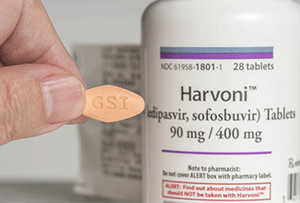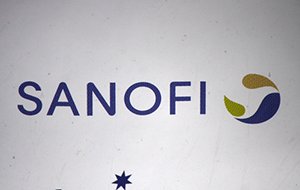As I’ve said before, buying a drugmaker stock with true billion-dollar “blockbuster” potential is like grabbing a license to print money.
Of course, it’s always at least possible to grab these shares on their way up, but that’s a little like fixing the barn door after the horses have bolted.
For the biggest possible pharma profits, investors have to look ahead into the firm’s “pipeline,” its arsenal of yet-to-be-released drugs that’s critical to keeping a drug company competitive in the long term.
[ad#Google Adsense 336×280-IA]Today, I’ve got the perfect “Buy” recommendation for a company that’s doing just that…
Why It Pays to Beat the Market on Pharma
Gilead Sciences Inc. (Nasdaq: GILD) is the perfect example of how getting into a stock just before a blockbuster is released can make the difference between a huge windfall and a loss.
Gilead was one of the first companies to develop a one-pill-a-day regimen for HIV/AIDS.
It then took this technology and applied it to the hepatitis C virus (HCV).
Before these drugs, an HCV infection meant open-ended medical supervision. For insurance companies, that’s an extremely expensive proposition.
 But a 12-week round of treatment with Gilead’s Harvoni or Sovaldi costs around $100,000. And the cure rate is in the upper 90% range.
But a 12-week round of treatment with Gilead’s Harvoni or Sovaldi costs around $100,000. And the cure rate is in the upper 90% range.
For insurance companies, that’s a no-brainer.
Harvoni and Sovaldi have become two of the most successful drugs of all time since their 2013 launch. By now, the two have brought in about $20 billion in revenue for Gilead.
Gilead investors realized tremendous gains from these drugs, better than doubling their money since before Sovaldi’s debut.
Now, here’s where a strong pipeline can make all the difference…
Investors who bought at or near the top haven’t benefitted much from Gilead’s strong performance. Instead, they’ve lost some money as Gilead is off 35% in the past 12 months.
You can see the performance is like night and day, and that gets at the heart of the pipeline’s importance.
The share price is off because competitors, including generics, have entered, and Gilead has a thin pipeline. And it hasn’t bought another company to boost its pipeline.
For lack of a pipeline, this juggernaut is floundering.
The company I’m going to show you doesn’t have that problem. Quite the opposite.
One of the Richest Pipelines I’ve Ever Seen
This is the perfect time to buy French “Big Pharma” player Sanofi SA (NYSE: SNY). This company has one big drug coming to market in coming months, and it’s expected to see $3 billion in annual sales by 2020. That’s just barely scratching the surface here.
Sanofi has 44 drugs in its pipeline and a whopping 13 in phase 3 trials. Of those, about half come from collaborations or partnerships – something we’re seeing more and more of in pharma these days. In my view, it’s a smart move to help split up the costs and risks of new drug development.
 Another smart move: making sure the company gets every last possible cent of profit out there.
Another smart move: making sure the company gets every last possible cent of profit out there.
You see, this company also learned an important lesson about navigating the increasingly powerful pharmacy benefit managers (PBMs). These are the firms that come between drug companies and healthcare insurers.
If they greenlight a drug, then insurers will decide what costs they will cover. If they ignore a drug, insurers will likely ignore coverage on it as well.
Simply put, the PBMs can make or break potential new blockbusters.
Last year, Sanofi and its partner Regeneron Pharmaceuticals Inc. (Nasdaq: REGN) launched a new cholesterol drug, Praluent. But the PBMs thought its $14,600 annual price tag was too high, so they restricted their coverage of it.
Praluent sales fizzled.
Sanofi was determined not to make that mistake again. The stakes are high: This year Sanofi is set to release a new eczema drug, Dupixent. The price tag is a hefty $37,000 a year.
Dupixent is for the most difficult and painful cases of eczema, and it doesn’t have the cancerous side effects similar treatments for lesser forms of eczema carry with them.
But Sanofi wised up and did the work with the PBMs and insurance companies this time around.
What’s more, Dupixent is the only drug that does what it does, which saves it from direct competition.
Finding places to sell those drugs is crucial, too.
Sanofi Is Boosting Its Market Presence in a Big Way
A rich pipeline isn’t all Sanofi has going for it. Its growth in China is incredible.
According to The Wall Street Journal, Sanofi is expecting to grow its Chinese sales by 10% this year. Last year, the company reaped more than $2 billion in sales.
China is already Sanofi’s third-largest market after the Unites States and, of course, France. And given China’s desire to ramp up the quality of its healthcare system to First World standards, the growth could easily exceed that.
Emerging markets, including China, already make up almost one-third of Sanofi’s revenue. By building out its exposure in emerging markets, it helps extend the life of some of its drugs that have come off patent in the United States and Europe.
For example, diabetes drug Lantus was a major revenue source for Sanofi, but it came off-patent in 2015. But diabetes is rising in Asia, and Sanofi can sell the drug without as much competition.
It has also customized some of its drugs for the Chinese market. Eloxatin is used to treat colorectal cancer in the West, but Sanofi has re-engineered it and tested it to treat liver cancer in China.
Given the relative immaturity of China’s biotech and generic drugmakers, it will be years until they stop looking to the West for help managing their pharmaceutical demands.
Those years of baked-in growth suit Sanofi just fine.
It plans to launch more than 10 drugs in China by 2020. And China is talking about scrapping a local testing law that has slowed entrance in to its drug market by big pharma. Sanofi’s strong reputation in the country will be a big asset moving forward.
But let’s check out the power these shares are packing right now…
Sanofi’s Strong 2017 Performance Will Get Stronger
The No. 5 drugmaker in the world is constantly working to build its pipeline, grow its markets, and stay on the cutting edge of the dynamic drug market.
That’s shining through in Sanofi’s performance this year.
Sanofi is up nearly 14% year to date, which reflects its strong position moving forward, both in the United States and abroad. It also has a sturdy 3.4% dividend yield.
The best part is, it’s trading at a discount to its Big Pharma peers and competitors right now.
I don’t expect that to last long at all. There’s some serious growth around the corner.
Sanofi just recently announced that it’s going after Boston-based biotech Flexion Therapeutics Inc. (Nasdaq: FLXN) in a deal that will likely approach $1 billion. Its Zilretta is in trials for osteoarthritis of the knee – a baby-boomer drug for chronic pain.
There’s also talk Sanofi is looking to sell off its European generics unit to focus on its growing Rare Disease sector, the territory of the so-called “orphan drugs.” These special drugs that treat a handful of cases are like rocket fuel for pharma companies.
This company’s best days are clearly (just) ahead of it, so this is a great time to buy at market.
— Michael A. Robinson
[ad#mmpress]
Source: Money Morning
